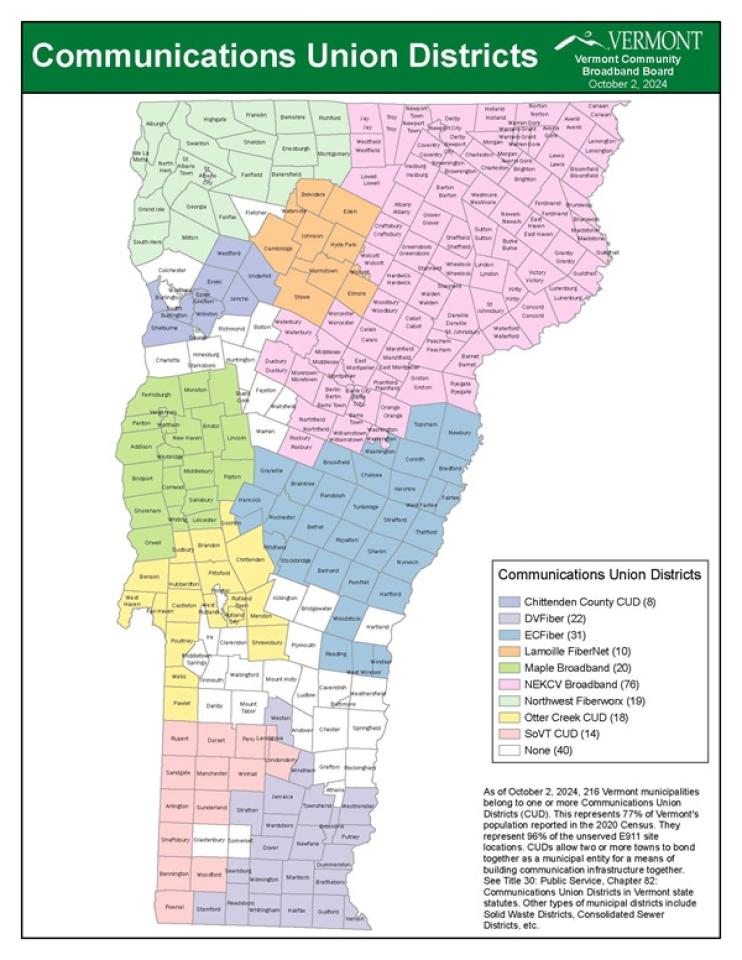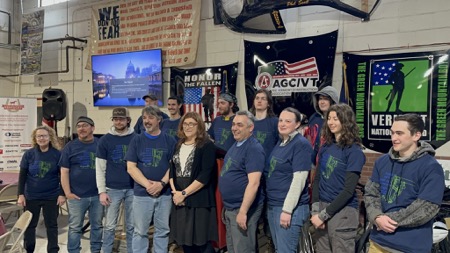
As states struggle to readjust their plans to expand high-speed Internet access in the wake of the Trump administration “termination” of the Digital Equity Act, Vermont is working to address the multi-million dollar shortfall by aligning the state’s Digital Empowerment initiative with its newly established Affordable Long Drop Program.
The Affordable Long Drop Program was established to provide grants to eligible Internet service providers (ISPs) in order to cover the connection costs for Vermonters whose homes are beyond standard drop distances.
Typically, an ISP will pay for a standard drop, which is the final external link that connects a provider's distribution network to the end-user's location – a distance that most often spans a couple hundred feet or less.
In rural areas around the country, community-minded operators like telephone and electric cooperatives will often cover the first quarter of a mile. This has also been the case in Vermont, where many of the state’s Communications Union Districts (CUDs) have been footing the bill to cover as much as the first 2,000 feet of drop distance. But, as with any predominantly rural state, there are a number of homes located just beyond that 2,000 foot range.
The construction costs of extending fiber lines can get pricey the further the home is away from the main fiber routes. Vermont’s Affordable Long Drop Program aims to help pay for the drops costs of the last mile networks that are currently being built across the state to help ensure residents in harder-to-reach locations can still get Internet access.

The Vermont Community Broadband Board (VCBB) – which administers the state’s broadband expansion efforts – “wanted to focus on meeting the needs of individuals who could otherwise not get connected,” VCBB Compliance Director Kristina Sweet tells ILSR.
Although there is “no (household) income threshold” for the program, Sweet said, the VCBB is trying to thread the needle between being “inclusive of many scenarios” and “making sure we are using public funds with a public benefit, as opposed to (subsidizing) folks who would otherwise have the means” to pay for an extended drop.

To that end, the program will prioritize funding for manufactured home communities, low- and moderate-income Vermonters, and subscribers at eligible addresses who have signed up and committed to taking service.
Applications from eligible providers will start being accepted starting on August 29 with the application window staying open until September 12, 2025.
Eligible providers include: “Communications Union Districts (CUDs), small communications carriers, or Internet service providers working in conjunction with a CUD to expand broadband service to unserved and underserved Vermont locations as part of a plan to achieve universal broadband coverage in the district.”
Notably absent in this list are the regional monopolies working on their own.
It is their refusal to expand into less profitable areas which created these gaps the VCBB, CUDs, and small providers are trying to fill.
Additionally, state broadband officials say, all applicants must have “an approved universal service plan and a viable business plan” in order to qualify for Long Drop Program funds.
The Vermont “Pivot” Towards Affordable Access
Because GOP leaders have eliminated and/or blocked key parts of the bipartisan infrastructure law that aimed to address the broadband affordability crisis, Britaney Watson – VCBB’s Digital Equity officer and Long Drop Program lead – tells ILSR how the Long Drop Program had to be structurally re-adjusted – in the wake of President Trump declaring that a law passed by Congress during the Biden Administration had been “terminated.”

Watson acknowledged that losing the $5.3 million of Digital Equity Act capacity grant funds the state had been slated as a significant setback, the state is still moving forward with its own Digital Empowerment Plan, which now includes the Long Drop Program.
“We needed to make a pivot,” she said, further explaining how the VCBB revamped the program by re-aligning it with the state law (Act 71) that established the state’s broadband office.
“We are embracing the intention that the state set forth in creating the office,” Watson said.
“The pivot still aligns with being focused on ensuring broadband availability to all Vermonters and Vermont addresses. The Affordable Long Drop Program will really allow us to reach our goal.”
Moving forward, VCBB Communications & Outreach Manager Herryn Herzog said “this is going to be part of our Digital Empowerment Program … to enable people to take part in what is essential.”
A Win-Win Arrangement
The “essential” nature of Internet access and its connection to affordability is something state broadband offices across the nation are working to resolve. It’s a challenge made more difficult with the change in administration, which has ushered in a view that Internet access is no longer seen as “essential” under the current administration – imposing policies that overlook what has become a truism in addressing the digital divide: if the service is not affordable, it’s not accessible.
Or as Watson put it: “having high-speed Internet in your neighborhood means nothing if you can’t afford to connect to it. This (Long Drop) program is designed to be the final push that turns availability into true accessibility, opening the world of opportunities that come with a reliable broadband connection – from jobs to education, telehealth, social and so much more.”

In Vermont, Herryn said, it wasn’t yet clear how many locations would need Long Drop funds, which makes it difficult to estimate how much the program will ultimately cost.
Still, the state is hopeful the program will be a success thanks to the $2.5 million of remaining American Rescue Plan Act (ARPA) Capital Projects Funds (CPF) the state has because some of the state’s “broadband buildout projects came in under budget,” combined with another $1.5 million from the state’s Connectivity Initiative fund.
“We don’t know for sure yet but there are hundreds of addresses,” Herzog said. Still, she said, the investment will be worth it, especially for the state’s nine CUDs.
“It will help more people join and pay for subscriptions, so we see it as a win-win.”
Christa Shute, Executive Director of NEKCV CUD in the state’s most rural region, agreed:
“The Affordable Drop Program will allow NEK Broadband and CVFiber to serve hundreds of potential customers that have signed up but could not afford to put in the necessary underground conduit from the pole line to their house," Shute said.
With 71 towns and three of the lowest income counties, NEKCV is focused on maximizing the value of the program for our rural residents.”
(*This story has been updated to clarify how the Affordable Long Drop Program fits within the state's Digital Empowerment Plan).
Header image of fiber technician drilling into utility pole courtesy of Vermont Community Broadband Board Facebook page
Inline image of fiber technician attaching fiber lines near tree courtesy of Vermont Community Broadband Board Facebook page
Inline image of graduating class from VCBB’s Broadband Technician Pre-Apprenticeship Training courtesy of Vermont Community Broadband Board Facebook page







